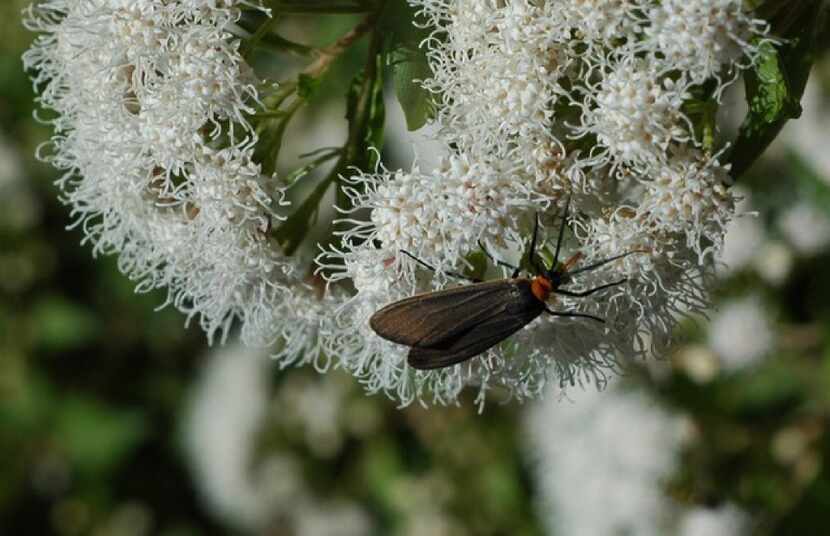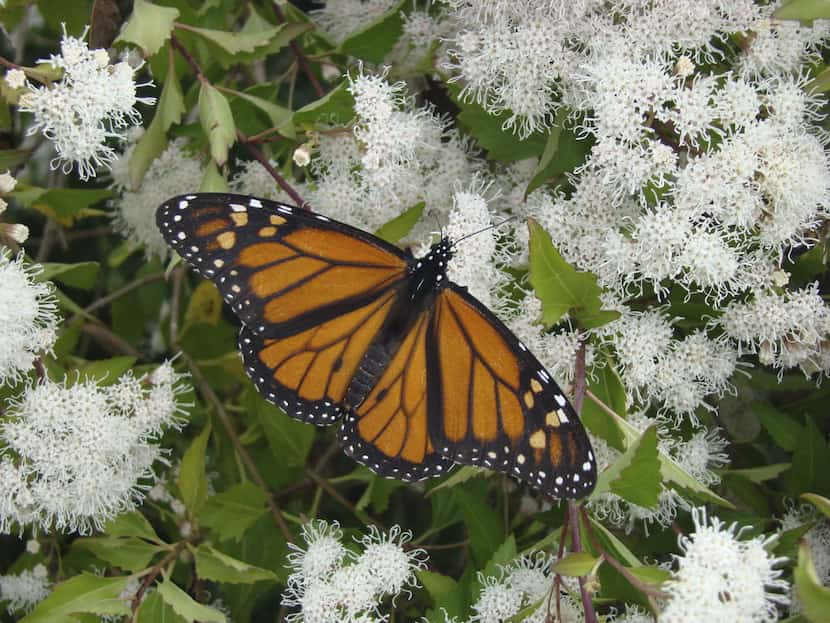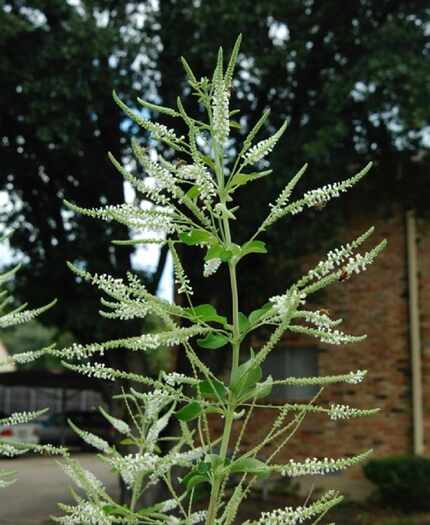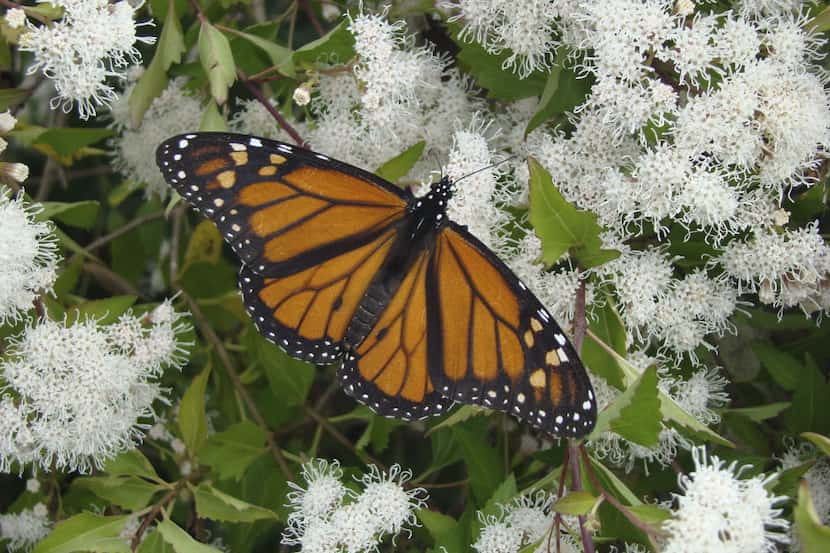I've received a lot of questions from readers lately about a lack of pollinators in their gardens. Folks not only miss seeing them, but vegetable production is down.
Usually my advice is to plant as many flowering plants as possible in a wide range of colors, fragrances and bloom times. There are two plants that are outstanding in this category — white mistflower and almond verbena. No other plants attract beneficial insects like these do.

White mistflower
You'll see white mistflower under two different botanical names: Eupatorium wrightii and Ageratina wrightii. Common names include Wright's boneset, Wright Ageratina, Wright Eupatorium and snakeroot. Growing from 2 feet to 4 feet high and wide, it is a deciduous, shrubby perennial with lacy leaves and clusters of delicate white flowers mostly from September through October. It does well in sun or light shade, attracts butterflies, and spreads by rhizomes. Prune to 3 inches after the first hard frost to keep it compact and tidy. Heavy shearing will promote a denser shape and more flowers the following year.

Most Eupatorium species like moisture, but this plant is more drought tolerant, although it may need watering during the summer in dry areas. White mistflower is excellent for attracting butterflies and hummingbirds, and its small stature makes it appropriate for most gardens.
The blue form of this plant is Conoclinium greggii (Gregg's mistflower). It's almost as good, but not quite.

Almond verbena
Almond verbena (Aloysia virgata) is the second plant I like for attracting pollinators. Also called sweet almond verbena, this is the most beneficial insect-attracting plant I have ever grown, and the fragrance is wonderful. It gets big, with a height of 10 to 15 feet and a spread of 8 to 10 feet. It thrives in full sun but can stand some shade. It's a large, woody deciduous shrub that strongly resembles Buddleia sp.

At the branch tips are highly fragrant, delicate white flower spikes that sway gracefully at the slightest breeze, sending their pleasant aroma over great distances. The flowers are produced in cycles from early spring through summer to the first hard frost. The wonderful flowers are a magnet for butterflies, bees, beneficial wasps and flies, and many other pollinators.
It has few if any disease or insect pest problems and is easy to grow in well-drained beds in most soils with low water and fertilization requirements. Prune between bloom cycles for dense growth, and prune away dead wood early spring at bud swell. You can use it as a hardy perennial here in North Texas, but it can also be used as an annual farther north.
Give these two beneficial insect attractors a try. You will love them both.
Resources
Online: dirtdoctor.com or facebook.com/thedirtdoctor. Email at info@dirtdoctor.com.
Radio: "The Answer" KSKY-AM (660), 8-11 a.m. Sunday. ksky.com. The call-in number is 1-866-444-3478.
Mail: P.O. Box 140650, Dallas, TX 75214

/cloudfront-us-east-1.images.arcpublishing.com/dmn/PIRSXLSTI5CXFHLDUNAQQ5I4LY.jpg)
/cloudfront-us-east-1.images.arcpublishing.com/dmn/Z6Q3ZN5V5JGBND5KFCSYUKOVEM.jpg)
/cloudfront-us-east-1.images.arcpublishing.com/dmn/BPESNKYBHJFDDJOIOMXBWEEFTE.jpg)
/cloudfront-us-east-1.images.arcpublishing.com/dmn/34FLCDTPKNDRTD35ONBVT3MSDE.jpg)
:no_upscale()/cloudfront-us-east-1.images.arcpublishing.com/dmn/LENNV5VB4X44EZBCVCTKTNVGRU.jpg)